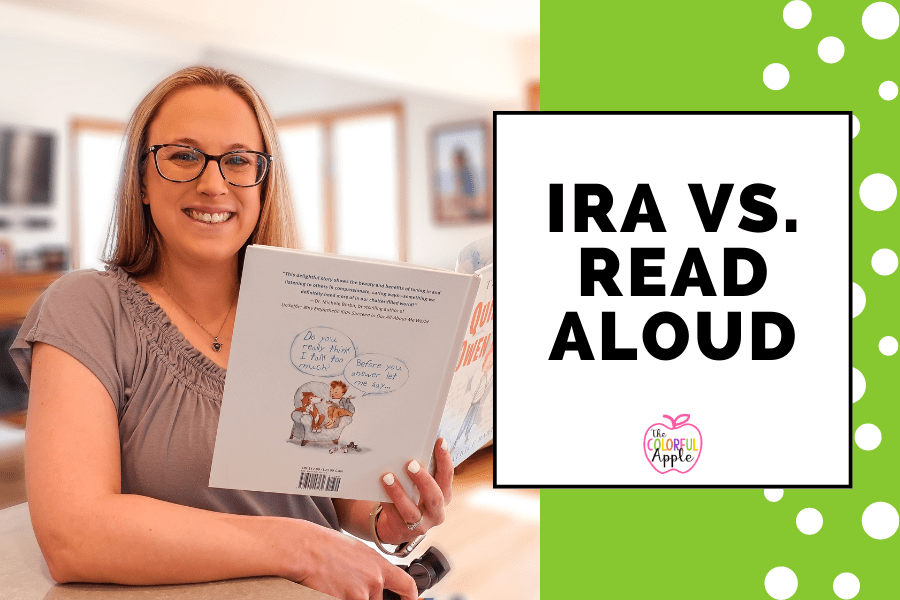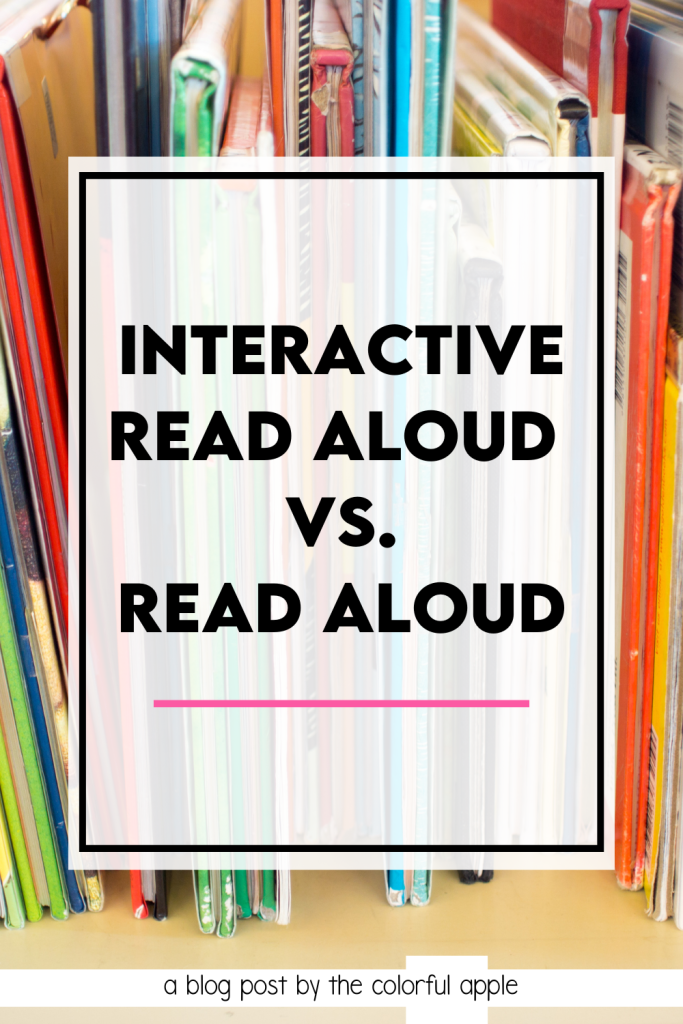
Students love to sit down and listen to a good book. There is something magical about how invested and interested each student becomes when listening. While teachers would love to read books to students all day, there are many standards to teach. So, time for read alouds often becomes limited. Since students love to listen to stories, teachers have found creative ways to incorporate the story into the standards. This usually involves interactive read alouds. To ensure teachers incorporate thinking into the story, it is vital to understand interactive read alouds vs. read alouds. Thankfully, this guide is here to help!
I’m sharing all these books on video as well! Check out the What’s the Difference? episode on my YouTube channel.
Important Understanding
While interactive read aloud and read aloud sound familiar, they are very different. So, it is imperative to understand interactive read alouds vs. read alouds when incorporating both in the classroom. While they both involve a great story, how teachers implement them is entirely different.
Read Aloud
During a regular read aloud, teachers can pull a book off the shelf and read it to their students. Now, this is a fantastic thing to do in your classroom! It is incredible to share a story for the pure enjoyment of reading. However, there are no strings attached. The teacher does not focus on reading strategies, skills, or extension activities. Instead, the focus is on students enjoying a book and possibly discussing what happened afterward.

Read Aloud Benefits
When reading a book to students with no strings attached, students learn books are amazing. They see how invested they can become in characters and situations. Additionally, they learn more about their interests, explore different texts, and build their drive to read. Read alouds can even create a classroom community and empathy among students. Ultimately, read alouds helps students develop their love of reading without any intentional discussion and activities.
Interactive Read Aloud
When you think of an interactive read aloud, many think it’s a read aloud with students talking. While both are correct, there is so much more to an interactive read aloud.
During an interactive read aloud, teachers intentionally plan out the read aloud lesson. There is whole group instruction where the teacher reads the book aloud and occasionally pauses. This is done for discussion, sharing teaching points, encouraging conversation with students, and providing interactive engagement strategies.

Interactive Read Aloud Benefits
When understanding interactive read alouds vs. read alouds, it is crucial to remember there is a text-based discussion. So, you are teaching a skill or strategy through reading the book. Students can then take this back to their own reading lives. Students often forget they are intentionally learning something when it is within the interactive read aloud.
An interactive read aloud also provides a context for learning. It’s an opportunity to teach and model those reading skills or strategies that you are teaching your students. Additionally, students learn what fluent reading sounds like and how people can stop and think about the meaning behind the words. Essentially, an interactive read aloud combines reading with academics.

Honestly, interactive read alouds are essential to use in the classroom! They support the curriculum, meet the standards you’re teaching, and help build comprehension. Additionally, they build engagement and help students interact with their teachers and peers.
To explore these benefits more, check out the Benefits of an IRA Freebie!
Preparing for an Interactive Read Aloud
When identifying key differences between interactive read alouds vs. read alouds, time and planning are central. A read aloud is quickly pulling a book off the shelf. An interactive read aloud is well planned out. Teachers have read the book, planned the lesson, wrote discussion questions, and selected vocabulary. So, students are learning quite a bit from this experience.
When understanding interactive read alouds vs. read alouds, both are so important. They each serve different purposes and are very beneficial to students. Thankfully, both build relationships, classroom communities, and empathy!

If you do not want to miss any of the upcoming lessons, join my email list to be notified of all the interactive lessons coming up! By joining the email list, you will receive the Benefits of an IRA Freebie for blog exclusive subscribers!
Grab this Free Read Aloud
If you do not want to miss any of the upcoming lessons, join my email list to be notified of all the interactive lessons coming up! By joining the email list, you will also receive a FREE Book List for Social Emotional Learning for blog exclusive subscribers!
Save this Post
Be sure to save this pin to your favorite read alouds board on Pinterest! You’ll be able to return to this resource when you are ready to incorporate interactive read alouds or read alouds with your students.
